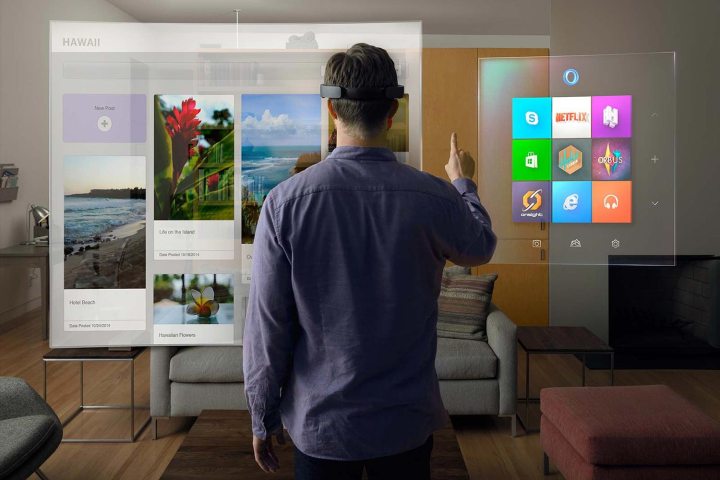
On Monday, Microsoft announced that it was handing out a second wave of invites to developers who had registered their interest in a pre-release version of the hardware, according to a report from WinBeta. Interested parties who did so are advised to check the status of their application via official Microsoft channels.
As announced at BUILD 2016 earlier this year, Microsoft began shipping the first wave of HoloLens development kits on March 30. This version of the hardware includes the all-important headset, a carrying case, and the “clicker” peripheral that’s currently being used to navigate its UI.
Breakthrough tech like HoloLens is exciting on a conceptual level, but in order to convince consumers that its price point is warranted, content is king. Hardware isn’t going to fly off shelves if it doesn’t offer up compelling experiences that can’t be enjoyed anywhere else — and that’s where developers come in.
Putting HoloLens in the hands of as many developers as possible increases the likelihood that someone will create a killer app that can sell the headset to the masses when the time is right. As such, it benefits Microsoft to make a new wave of development kits available as soon as possible.
However, a piece of future tech like this doesn’t come cheap; a HoloLens development kit will set you back a hefty $3,000. If that sounds like a fair price, you can head to Microsoft’s HoloLens site to check the status of your application, or register to be considered for the next round of development kit invites.
Editors' Recommendations
- Microsoft accidentally released 38TB of private data in a major leak
- New ways Microsoft is enticing developers to use Windows app store
- You won’t be taking Microsoft’s HoloLens 3 into the metaverse
- Microsoft now envisions Teams as the ‘gateway to the metaverse’
- Microsoft seems to be pushing developers away from UWP Windows apps


